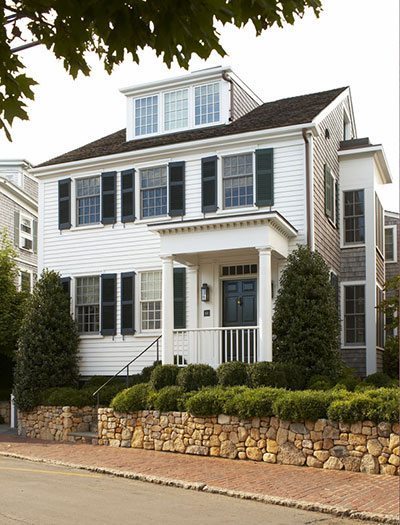Q and A with Architect Dudley Cannada
June 18, 2014
By Paula M. Bodah

Photography by Michael Partenio
Our annual Cape & Islands issue featured the Martha’s Vineyard home where Dudley Cannada and his partner, Russell Bridges, enjoy frequent respite from their busy lives in Washington, D.C. Cannada, who works from both D.C. and the Vineyard, is well known as a preservation architect. We looked to him for a bit of insight into his passion for historic buildings.
You call yourself an “old-house guy.” How old is old enough for you? Do you have a favorite era of house to work with?
Most of my work is in what are called “contributing structures” in designated Historic Districts. The age of the district is usually the deciding factor about which buildings are contributing, and this can be anything over fifty years old. I am drawn to buildings that have had a hard life but still hold some historic relevance. I guess I would say I prefer buildings over 150 years old.
How do you decide what old houses are worth preserving and which aren’t? Is there ever a time when you just have to acknowledge a structure can’t be saved?
The question illuminates how complicated these decisions are. In most cases, only a portion of any historic house is saved (my only true preservation work is usually on the principal facades) Most structures can be enhanced to maintain them and most interiors can be replicated, although you do lose some of the old house patina. In really old houses, only substantial decay in all areas is an indication that the building is past preserving.
Antiques have more value when the provenance is known. Is it the same with an old house? If Emily Dickinson lived there does that make it more worth preserving?
Provenance is fairly easy to find with most old houses; deed of ownership records are usually available as are old telephone directories and other things that identify previous owners. Yes, significant owners or events can be reasons a house attains historic status.
Twenty-first-century people have certain expectations—heating and air conditioning, big TVs, internet access. How much can you change or add to a house while still maintaining the integrity of its historical architecture and design?
There are two extremes in saving an old house. One is to preserve the exterior and to do whatever you like inside. I’ve done many very modern interiors in old structures. The other extreme is to preserve everything as is was originally—old bathroom tile, early stoves, old radiators. Most of my work is somewhere in between, but leaning toward the former.
What’s the biggest or most common mistake people make when they’re renovating an old house?
Hard question. Perhaps it is letting the house dictate how they want to live in it. For example, and owner might keep a large formal dining room and a tiny kitchen, when in reality making a bigger, eat-in kitchen would better meet their day-to-day needs.
Do you have a dream project—a house, anywhere in the world, that you’d love to be able to get your hands on to restore?
The great antebellum houses of my youth in rural Mississippi are still a passion for me but I really don’t want to live anywhere that is that hot.
Share
![NEH-Logo_Black[1] NEH-Logo_Black[1]](https://b2915716.smushcdn.com/2915716/wp-content/uploads/2022/08/NEH-Logo_Black1-300x162.jpg?lossy=1&strip=1&webp=1)






